The Gardens of Monteviot, a garden where magic lingers for future generations
James Truscott is entranced by a series of new gardens at Monteviot, near Jedburgh. that that successfully captures the magic of growing up in a place rich in history and legend. Photographs by Andrea Jones.
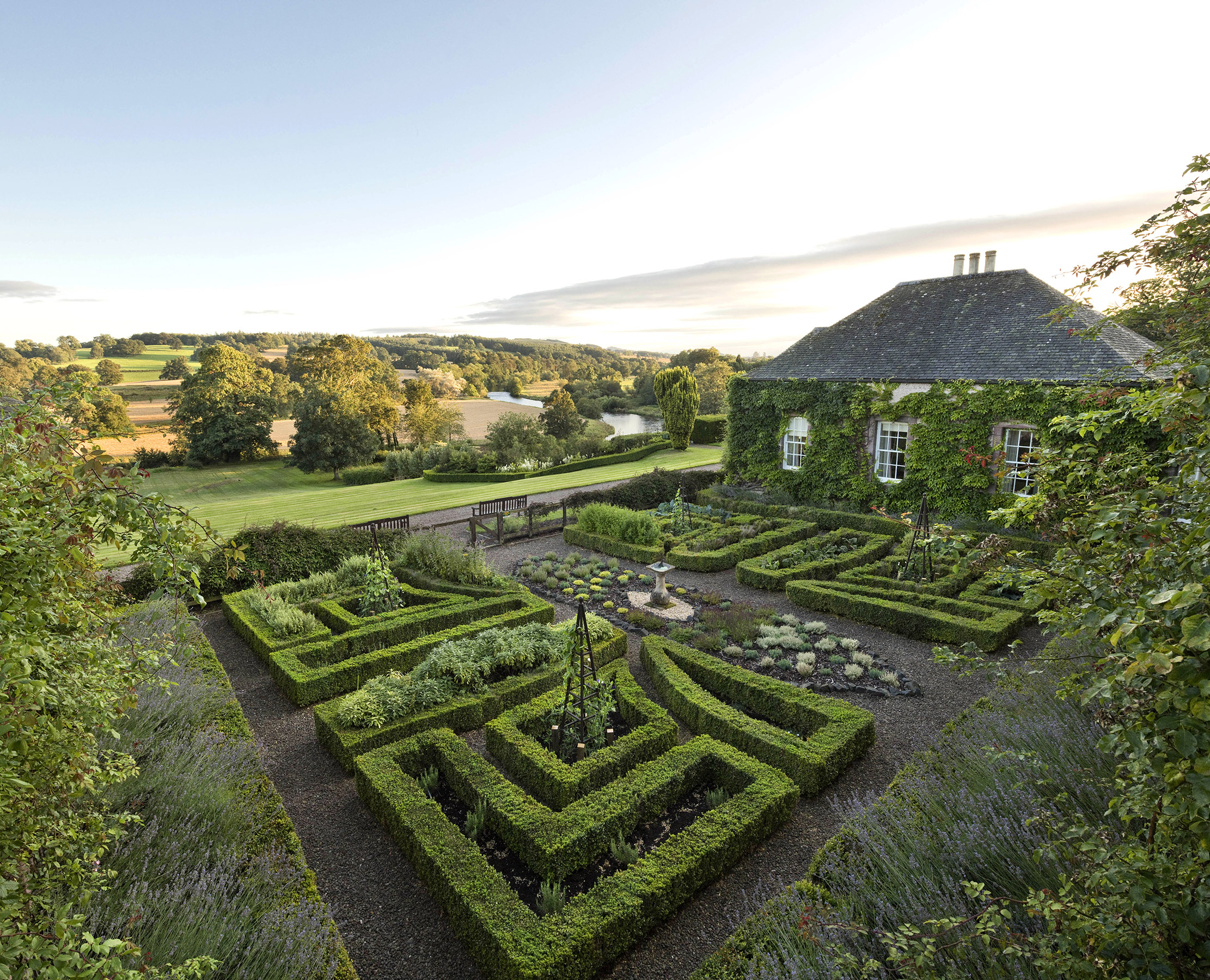

The River Teviot winds through a lush, green, wooded valley and then between rolling hills near Jedburgh in the Borders before lapping at a stone landing stage at the foot of a broad manicured lawn. This place is the River Garden, designed in 1960 by Percy Cane at Monteviot — or Mount Teviot, as it was originally known — the home of the Marquis and Marchioness of Lothian.
In the Rose Garden below the house, beds of pink and white David Austin roses spill over box edging beneath the buttressed wall that supports the main terrace. Standing here, it is difficult to believe that this quiet pastoral scene belies a violent past of advancing Roman armies fording the river below and of Border Reivers galloping across the valley to defend their homes against the constant threat of English attack.
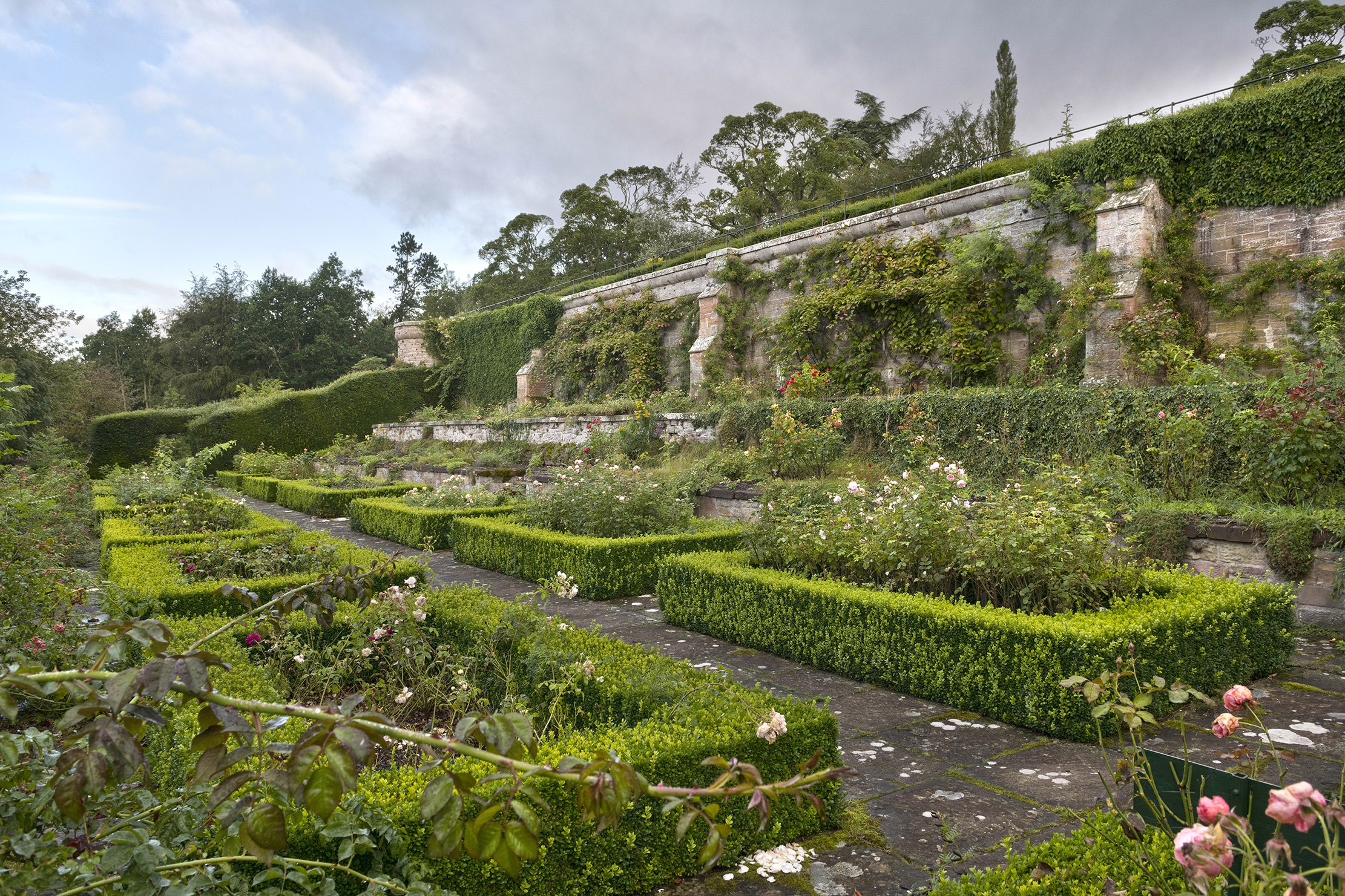
Initially a farmhouse, Monteviot was bought by Lord Lothian’s family in about 1700 and was extended over the following two centuries. The gardens were initially developed in Victorian times by the 9th Marquis, who, foreshadowing the current Marquis, had a political career. He served as Secretary of State for Scotland, 1887–92, but was also a keen orchid collector, indeed, the biggest private collector in Britain at the time.
The gardens as we see them today, however, have only been developed since 1960, when the present Lord Lothian’s parents engaged Cane, a renowned garden designer, to implement the River Garden. Set next to the Rose Garden terrace (which, together with the Herb Garden beside the house, is the oldest part), the River Garden takes the form of a high brick wall, U-shaped in plan, which supports a viewing turret from where one can enjoy the riverside panorama. Extensive mixed borders benefit from the shelter of the walls and one of Lord Lothian’s first tasks was to soften the strictness of these beds.
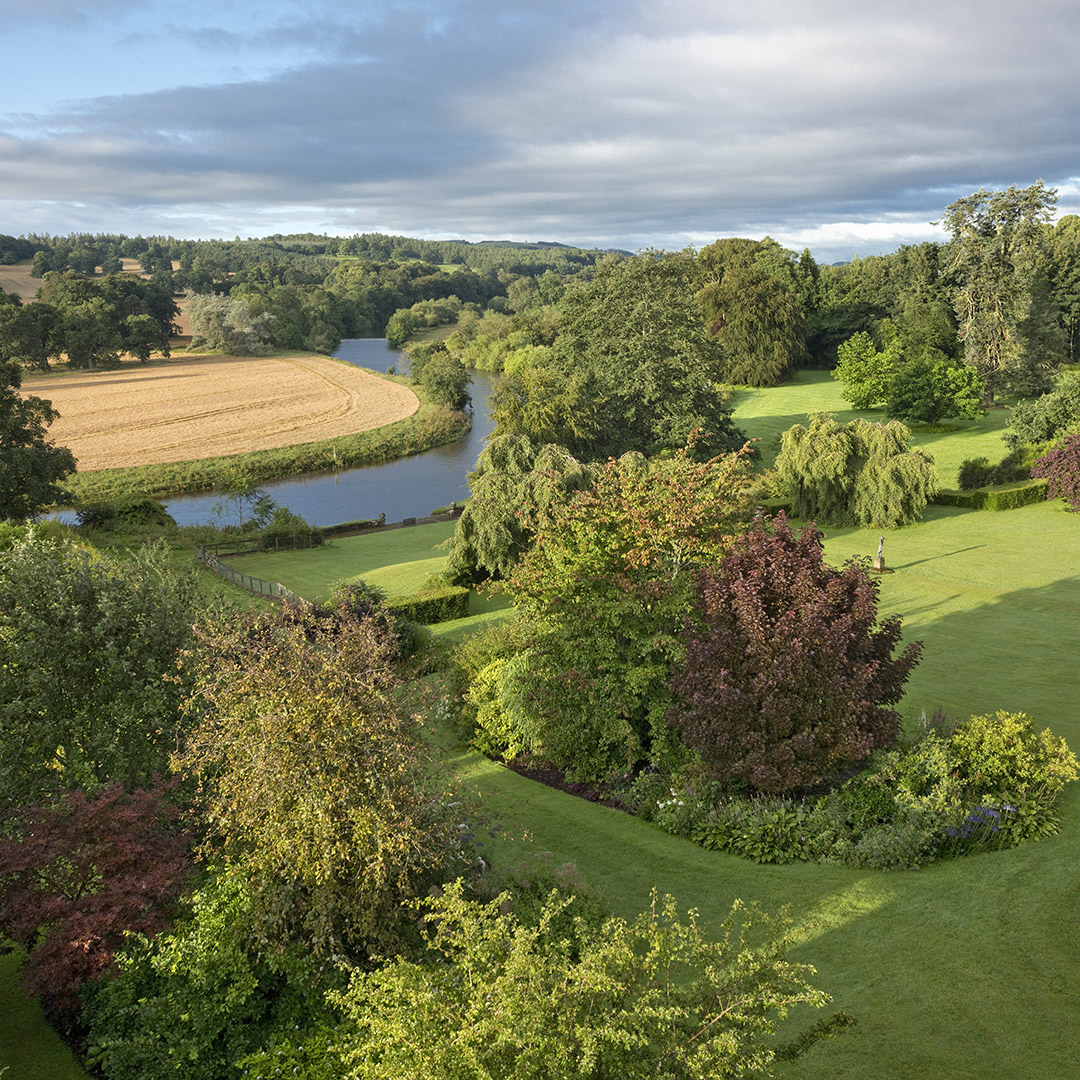
Progress on the development of the garden we see today has accelerated under Lord and Lady Lothian. Before he inherited the marquessate in 2004, Lord Lothian was a member of Parliament and it was during his tenure as Under Secretary and then Minister of State for Northern Ireland between 1993 and 1997 that he visited and was inspired by many Northern Irish gardens. ‘Unlike many of my contemporaries,’ Lord Lothian observes in his book The Magical Gardens of Monteviot, ‘my ambition was never to build a grand formal garden, but rather to create a series of different magical gardens which I hoped would make a captivating whole.’
Lord Lothian, who grew up here as a boy, says there has always been magic in the air at Monteviot and it has long been his ambition to create a series of gardens in which that ephemeral magic is encouraged to linger. The project has been a team effort,with his head gardener Ian Stephenson and Lady Lothian.
Magic comes to mind as one walks from relative openness of the terrace through the hushed solitude of the laburnum tunnel and emerges at its other end to find oneself transported to the contemplative calm of the Water Garden. What had been an area of boggy ground has been transformed into a series of silver pools dotted with islands linked by elegant timber bridges. Plantings of polygonum, whispering bamboo, iris, bright blue meconopsis, candelabra primulas, the unusual white American skunk cabbage and giant rhubarb (Gunnera manicata) create a peaceful oasis that has remained one of Lord Lothian’s favourite places to sit and put the hectic world of politics into perspective.
Sign up for the Country Life Newsletter
Exquisite houses, the beauty of Nature, and how to get the most from your life, straight to your inbox.
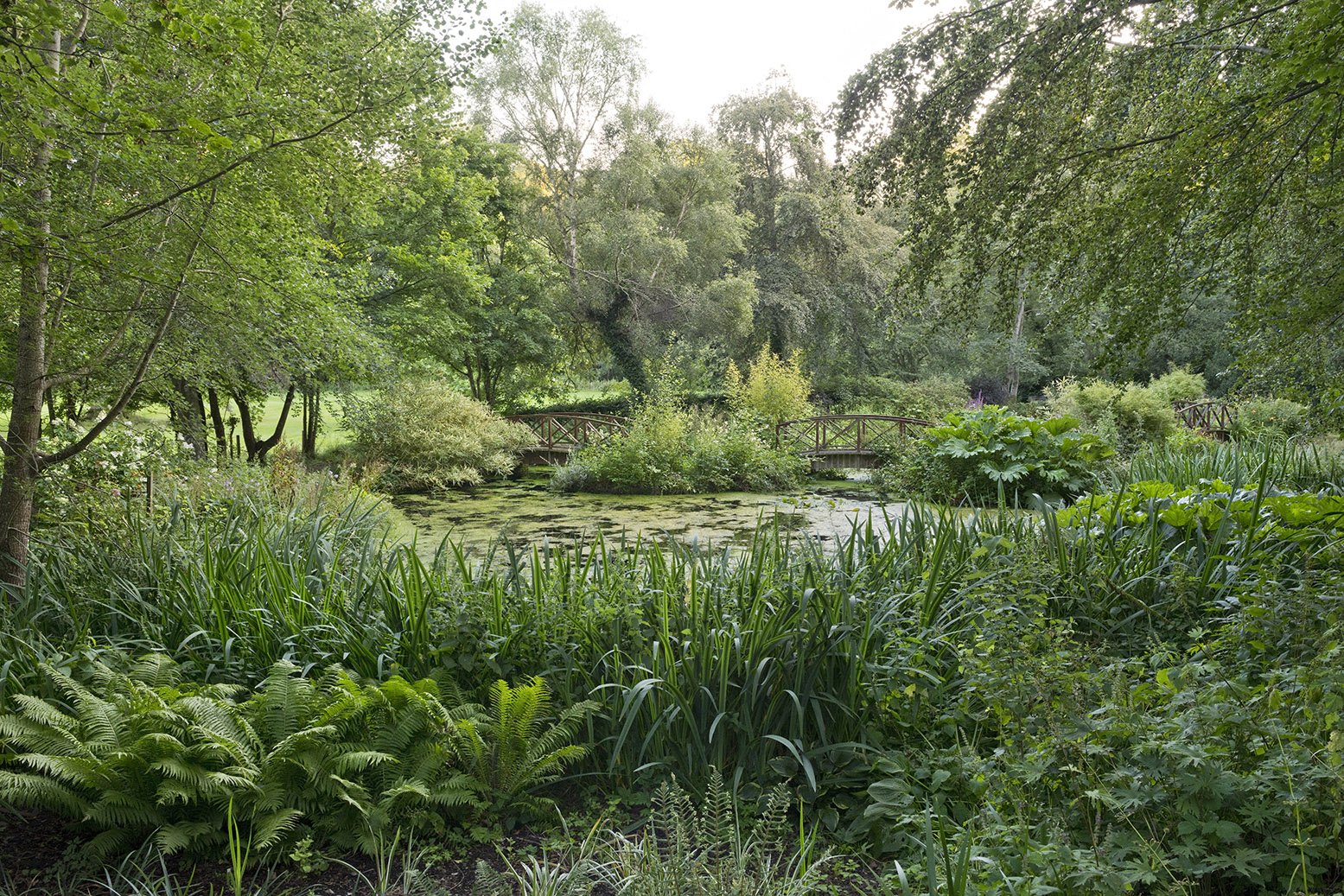
Two mossed and weathered sandstone boulders stand guard beside the path that leads on under the trees. These Guardian Stones lend a mystical, almost druidic quality to this corner of the gardens, but were, in fact, inspired by a stone sculpture Lord Lothian saw in Hyde Park. The atmosphere hangs heavy here: there is rumoured to have been a graveyard nearby for the unfortunate patients of a medieval hospice that once stood in the grounds.
A curling stone fixed to the top of another boulder appears behind a low-hanging bough and silently announces the entrance to the Dene Garden. Here, descending pools have been dug out of what had formerly been a dry stream bed. Now, water trickles from one dark pool to the next as the narrow path winds on through plantings that cleverly reveal only one pool at a time. As if to emphasise the sense of mystery, a hooded stone gargoyle makes an appearance from behind a bush. Gregory the Gatekeeper, as he is known, was rescued from a demolished Yorkshire church and now adds to the sense of melancholy.
Next to the main lawn and continuing the theme is the Weeping Stone. Water bubbles from its top and trickles down into an almost hidden stone sump, which echoes with the sound of the falling water. ‘Come weep with me’, it invites visitors.
Beyond the White Bank, planted with white-flowering wood hyacinths and Magnolia stellata, a winding path takes one through a wrought-iron gate into the Winter Garden. This glows in the low winter light with massed ranks of red and yellow cornus, the peeling white bark of the Himalayan birch, Betula utilis, and the shiny red bark of the Tibetan cherry, Prunus serrula Tibetica. As winter gives way to spring and the snow melts away, an array of bulbs emerges to carpet the glades with snowdrops, daffodils and then fritillaries.
Perhaps the most novel area at Monteviot, however, is the Garden of Persistent Imagination, which consists of a series of rooms contained within hornbeam hedges, each with its own distinctive character. Mr Stephenson, who has been head gardener here for 25 years, was allowed free rein and has put his skills as a joiner and stonemason to great effect.
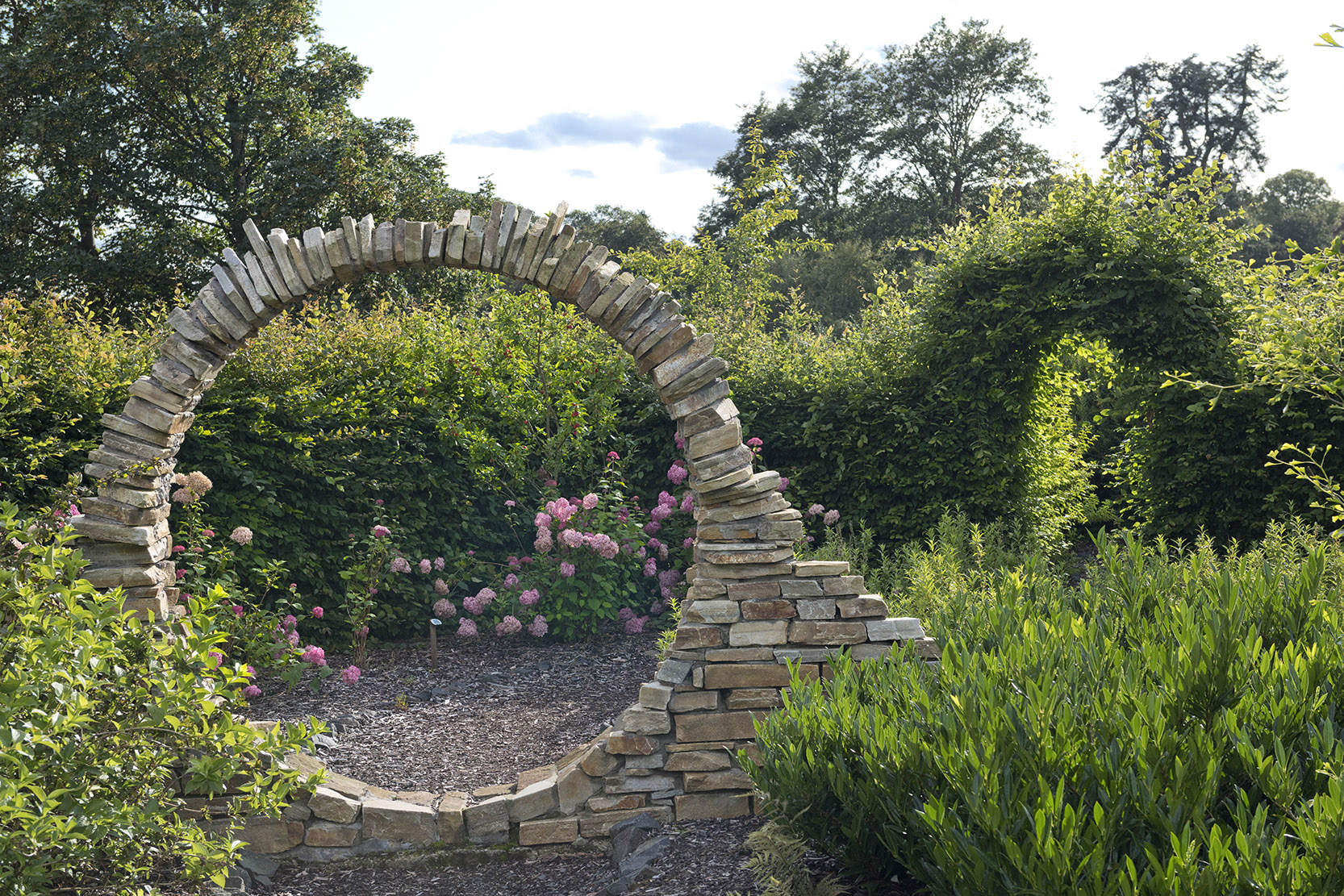
A gravel path winds through a crescent-shaped stone enclosure around a seat, called a sitouterie; a standing stone; a rambling, rose-draped sandstone pergola and a moon gate; a wooden Japanese-style bridge and dry gravel stream; and, finally, past two melting clocks inspired by Dalì.
The planting here is generally grouped by colour and form, according to its room. There are white-flowering eucryphia hedges, hydrangea in variety, euonymus, deutzia, philadelphus, hebe and weigela. Young trees have been planted, such as Cornus controversa Variegata, Ginkgo biloba, the maidenhair tree with its fern-like foliage and Liriodendron tulipifera, the tulip tree, with its green and orange tulip-shaped flowers.
If it is considered that he has succeeded in encouraging the magic of Monteviot to linger in his gardens for future generations, then, says Lord Lothian, he can regard this as his life’s greatest achievement.
Monteviot Gardens, Jedbergh, Borders, are open daily, 12 noon–5pm, until October 31 — www.monteviot.com. ‘The Magical Gardens of Monteviot’ by Michael Lothian, published by Monteviot House and Gardens, 2018, is available now.
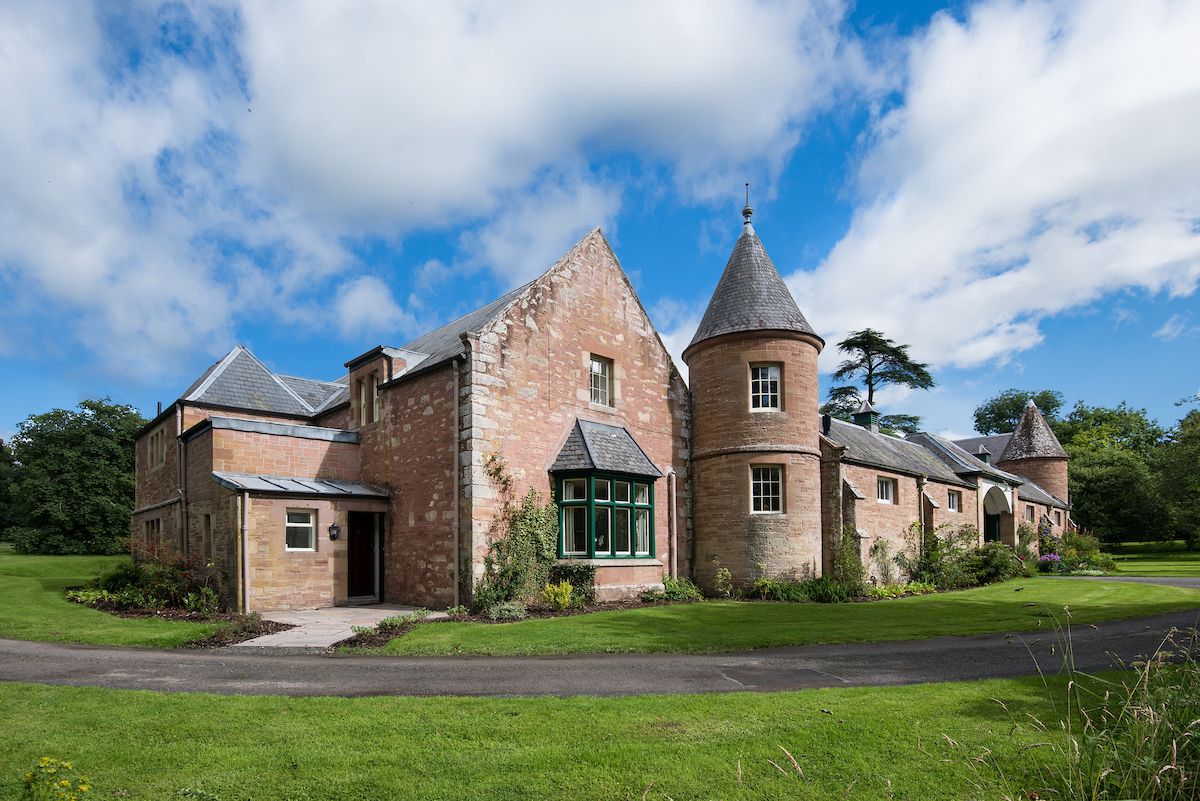
Credit: Crabtree & Crabtree
Monteviot Stables West: A perfect family staycation with one of Scotland's finest gardens just outside the back door
The stables at the gloriously pretty Monteviot House and Gardens near Jedburgh have been converted into a quite brilliant self-catering
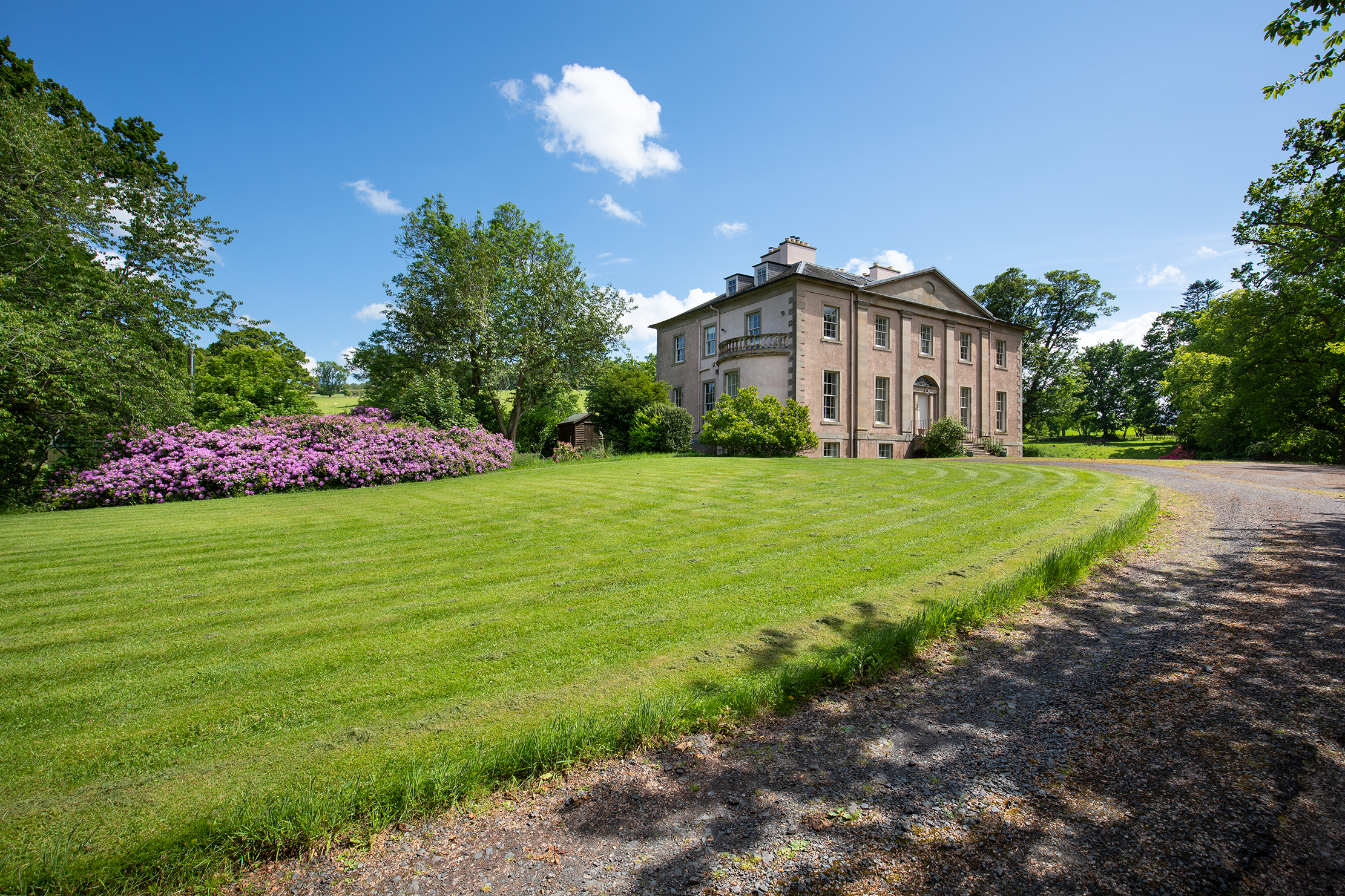
Rory Bremner's 'magical Borders retreat' for sale after 10 happy years and a 'labour of love' restoration
Country Life is unlike any other magazine: the only glossy weekly on the newsstand and the only magazine that has been guest-edited by HRH The King not once, but twice. It is a celebration of modern rural life and all its diverse joys and pleasures — that was first published in Queen Victoria's Diamond Jubilee year. Our eclectic mixture of witty and informative content — from the most up-to-date property news and commentary and a coveted glimpse inside some of the UK's best houses and gardens, to gardening, the arts and interior design, written by experts in their field — still cannot be found in print or online, anywhere else.

